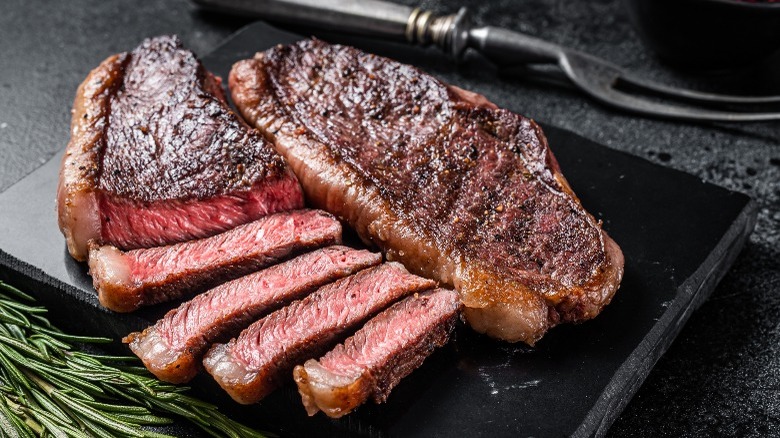José Andrés' Slow-Tempering Method To Keep All The Juice In Steak
Every carnivore has their own idea of what makes a perfect steak. A lot of what makes one steak better than the next has to do with personal preference, per Steak School by Stanbroke. From the cut of steak to how long it's aged, people are like snowflakes when it comes to their meat. According to Jamie Oliver, a top dollar cut of meat doesn't necessarily mean you're getting top-notch flavor. While ribeye, sirloin, and filet are prime cuts, there's something to be said about getting a good value.
Seasoning also plays a key role. That doesn't mean you need a complicated spice rub, Y.O. Steakhouse explained. Salt, pepper, and maybe some other pop of flavor are all you need. Finally, don't take shortcuts in your cooking process. Some swear by a cast iron pan. Others broil the meat, and sometimes, a grill can be right for the job.
While there are as many cooking techniques as there are opinions on how it should be done, José Andrés is convinced his method is the best, Food & Wine reported.
Go beyond room temperature when tempering steak, Andrés says
Carnivores flock to Spanish Chef José Andrés' restaurant Bazaar Meat at Sahara Las Vegas because of its innovative grilling method, according to Food & Wine. Andrés has a reputation for preparing Spanish dishes in both traditional and modern form, PBS reported. The focal point of his famous Vegas restaurant is a "fire stage," where the meat gets cooked. Andres's massive setup is part of what he believes makes the perfect steak.
Andrés strongly recommends tempering your steak with indirect heat. Most people, when they think of tempering meat, simply take it out of the refrigerator to come to room temp before cooking it. However, Andrés takes it to another level by cooking his meat on a grill that's about three feet above the coals. Once it hits 105, he says, it's ready to slice and eat without any resting time. This helps the meat retain its juices, which should stay inside the steak rather than on your plate. Allowing the juices to seep out is one of the mistakes everyone makes when cooking steak that can reduce the overall tenderness.

